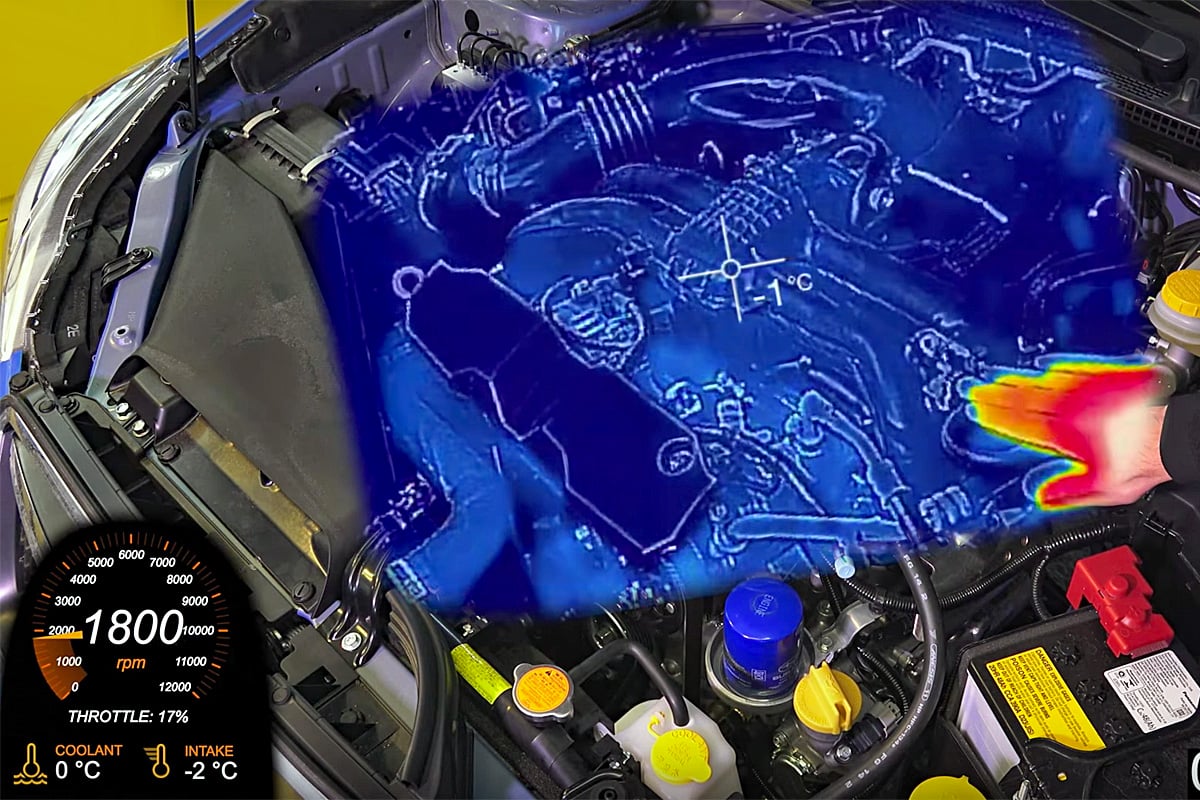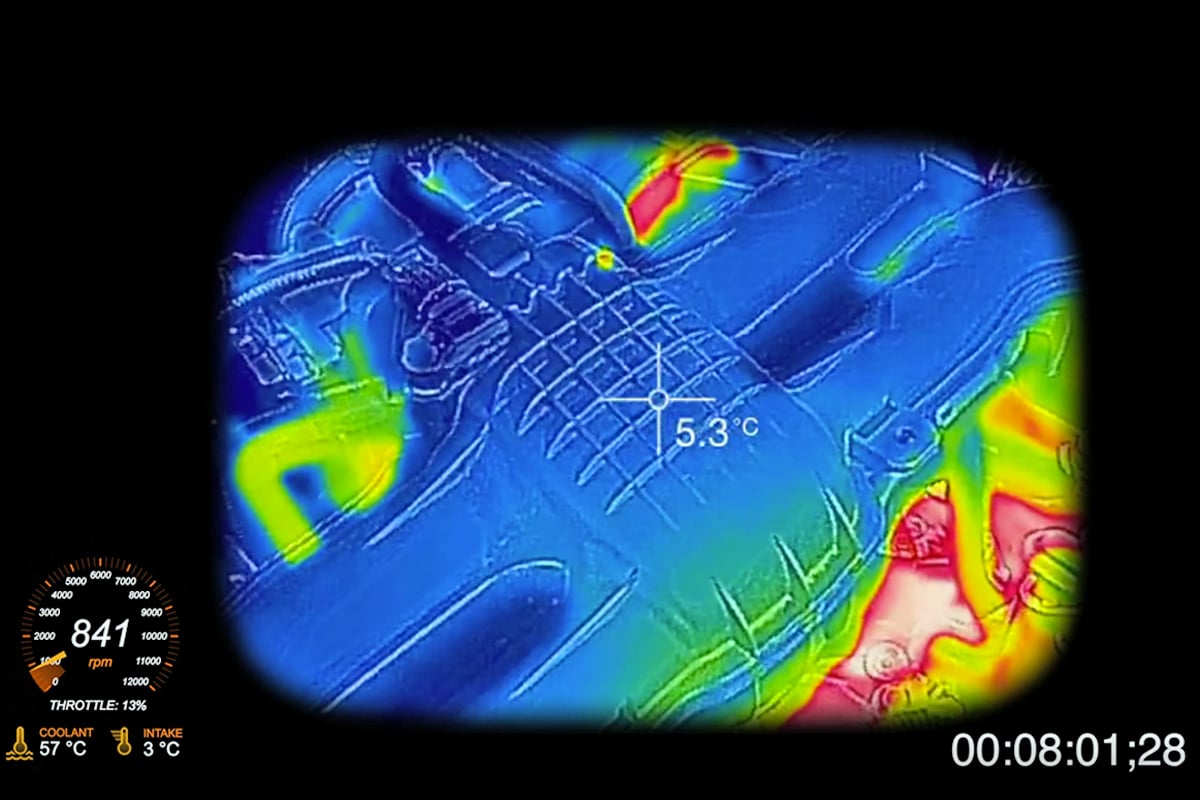If you live in a climate that often endures temperatures below freezing in the colder seasons, you’re probably familiar with warming up your car before driving off. Whether your intentions are to warm up the cabin for yourself or to allow the engine to warm up, have you ever wondered what that process would look like under thermal imaging?
Jason Fenske, a graduated mechanical engineer and creator of Engineering Explained, uses his thermal camera to observe how the engine of his Subaru Crosstrek warms up from a cold start when the ambient air is below freezing, -5.8 degrees C (21.6 degrees F) in his case. Fenske also logged engine RPM, throttle position, coolant temperature, intake air temperature and elapsed time to more accurately measure how long each component takes to reach operating temperature. We’re not writing this to persuade you to warm up your car or not, but rather to educate you on what is actually happening mechanically as your engine thaws out at idle.
The discussion continues to involve engine oil, and how it physically flows will vary at very cold temperatures depending on the viscosity being used. For example, according to SAE standards — an engine that has a recommended engine oil viscosity of 5W-30 can safely crank over and operate in temperatures as low as -35 degrees C (-31 degrees F). However, depending on your engines internal clearances the manufacturer may tweak this limit slightly, so always consult your vehicle’s owners manual to confirm the correct viscosity for your engine.

A graph displaying the SAE recommended temperature range for the most common engine oil viscosities. These are generalized values used for reference and may vary slightly by manufacturer, always check your vehicle’s owners manual to verify the correct engine oil viscosity for the climate you live in.



















